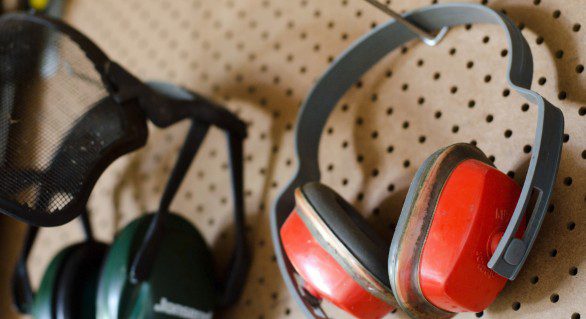22 million U.S. workers exposed to hazardous noise levels
Industry Trends | By | 21 Dec 2015 | 3 minute read

The Lasting Effects of Noise
22 million U.S. workers are exposed to hazardous noise levels at work, according to statistics published by the Centers for Disease Control and Prevention. Hearing loss has become one of the most common work-related illnesses in the United States.
Noise-induced hearing loss can occur from exposure to extremely loud impact sounds or from prolonged exposure to moderate noise levels.
The Dangerous Truth
This is an all too common condition for construction workers who began their careers a generation or more ago, before modern regulations required ear protection on the job. However, it could easily still be the fate of anyone who chooses to ignore or disregard current regulations.
The bottom line is exposure to high levels of noise can and will cause (likely permanent) hearing loss over time. Construction sites are bursting with such high levels of sound—from earth moves, to jackhammers, to large trucks. There are potentially harmful levels of sound occurring constantly. Not utilizing protection against these sounds can cause damaging and lasting effects.
The damage years of sound can have on unprotected ears cannot be helped with modern forms of surgery or medications. For many, even hearing aids won’t alleviate symptoms. For these reasons, this is a serious matter everyone in the industry should take into account. These are life-long consequences.
Once the damage is done, it is done. Permanent hearing loss and cannot be reversed. It is also imperative to realise this can be a gradual process. As such, you may not be able to tell from day-to-day anything is changing or being negatively effected until it is too late. The only course of action here is prevention.
These gradual, but permanent effects, can be caused from noise perhaps much quieter than one might initially think. In fact, damage can come from noise levels equal to a running lawn mower for eight hours.
What Can Be Done
It is very important workers plan ahead when working in an environment where noise levels are considerable. Today, there are many different types of ear protection available for use on construction sites. Such protective wear can drastically reduce risk of chronic conditions later in life—but only if worn consistently and correctly. Your employer is responsible for selecting and making available hearing protection on site. This protection must also be provided at no cost to the employee. If such options are not currently present, this is a breach of OSHA standards and an immediate inspection should be filed. In addition to proper protective gear, annual screenings by an audiologist should be provided to every employee in order to help detect any potential hearing loss going on.
Statistically speaking, hearing loss is more common in the field of construction than nearly any other occupation. More so than factory workers, farmers, members of the U.S. Air Force or U.S. Army, construction workers suffer hearing loss more than any other group—with as much as 60% of individuals in the field being affected personally.
There is no need to become a victim to the irreversible effects of job-site inflicted hearing loss. There are plenty of ways to protect one’s self in today’s world and doing so will be a lifelong advantage. The lasting effects of hearing loss are not just physical. Emotional damage can result as well from strained relationships and general social alienation. The importance of keeping one’s hearing thoroughly protected on the jobsite cannot be overstated. It can go on to have a serious impact for the rest of a worker’s life.
For helpful resources and to learn more about hearing loss prevention, visit the below links:
iAuditor Digital Hearing Conservation Safety Checklist
Preventing Hearing Loss: Noise Infographics
Centers for Disease Control and Prevention – Noise and Hearing Loss Prevention
NIOSH Noise Research – Twitter
Important Notice
The information contained in this article is general in nature and you should consider whether the information is appropriate to your specific needs. Legal and other matters referred to in this article are based on our interpretation of laws existing at the time and should not be relied on in place of professional advice. We are not responsible for the content of any site owned by a third party that may be linked to this article. SafetyCulture disclaims all liability (except for any liability which by law cannot be excluded) for any error, inaccuracy, or omission from the information contained in this article, any site linked to this article, and any loss or damage suffered by any person directly or indirectly through relying on this information.






